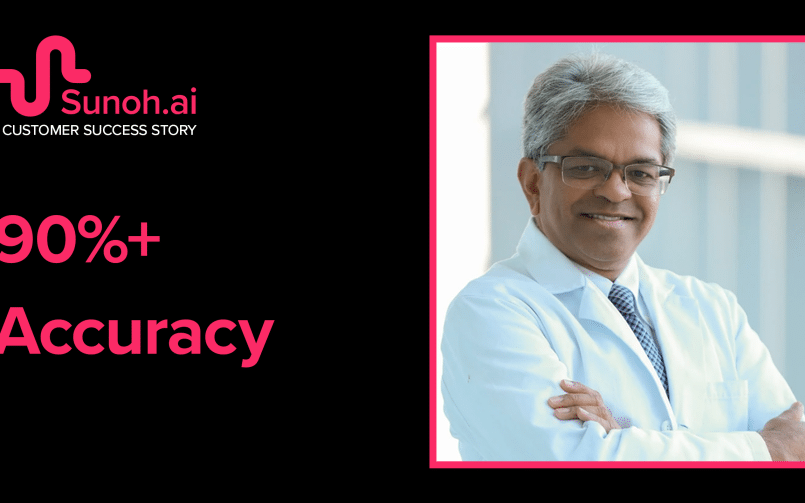AI-Powered Medical Scribe Integration within the EHR is Revolutionizing Clinical Documentation
- 7 May 2024
- Blog
eClinicalWorks

According to research conducted by 3M and the American Hospital Association, clinical documentation is critical in providing and coordinating care. Their study found that physicians who lack sufficient time for documentation are nearly three times as likely to report symptoms of burnout. That’s why reducing time spent on documentation is essential. This AMA report demonstrates how an AI scribe saves doctors an hour a day from the keyboard.
Integrating AI technology into the EHR eases the administrative workload, reduces burnout, increases provider satisfaction, and improves work-life balance. AI functionalities like medical AI scribes allow for more focused, distraction-free patient care. Last year, eClinicalWorks introduced a series of AI functionalities, including Sunoh.ai. AI-powered medical scribe solutions integrated into the EHR, like Sunoh, redefine patient-provider interactions and increase healthcare efficiency. In fact, Sunoh is set to become a go-to technology in modern healthcare.
Captures Unstructured Data
AI scribe solutions use natural language processing (NLP) technology to understand context and analyze unstructured data to generate real-time documentation. Sunoh.ai uses AI and ambient listening technology to pick up a patient and provider conversation and create a transcript that distinguishes between their voices. The provider can review and import relevant data to complete the clinical documentation.
Accelerates Documentation
Despite efforts to streamline documentation, Brownfield Regional Medical Center fell behind due to the volume of patients. Providers expressed dissatisfaction with all the typing required during patient visits. The clinic turned to Sunoh to ease the documentation burdens. Just one week into implementation, the practice sped up documentation time by 40%, with patient charts completed on the same day.
Accelerating documentation speed relieves physicians of tedious administrative tasks and allows them to focus on the patients.
Documents the Details
The detailed transcript summary Sunoh.ai creates captures lab, imaging, procedure, medication orders, and scheduling details for follow-up visits. It enhances patient information depth, allowing for more informed decision-making. Furthermore, detailed documentation promotes quality control and protects healthcare organizations from liability.
Adapts to Technology
Sunoh.ai is EHR-agnostic and fits in with any workflow in any healthcare setting—a community health center, an independent behavioral health clinic, in-person appointments, or telehealth visits. By minimizing manual data entry and simplifying documentation, Sunoh.ai helps reduce the administrative tasks that can lead to physician burnout. Its adaptability means it can grow with your practice.
Thanks to Sunoh.ai, practices like Brownfield Regional Medical Center (BRMC) are saving as much as two hours a day on clinical documentation. Michael Tackitt, director of Hospital and Clinic Operations at BRMC, believes that AI charting will be crucial in retaining and recruiting physicians in the future.
Integrating medical AI scribes within EHR systems propels the healthcare industry into a more efficient, detail-oriented, and patient-focused future. Embracing AI scribes like Sunoh.ai at your practice is more than an upgrade; it’s a big step toward modernizing and improving your healthcare delivery.
Visit Sunoh.ai for more details on how it can help revolutionize your documentation and drive your practice forward.


































